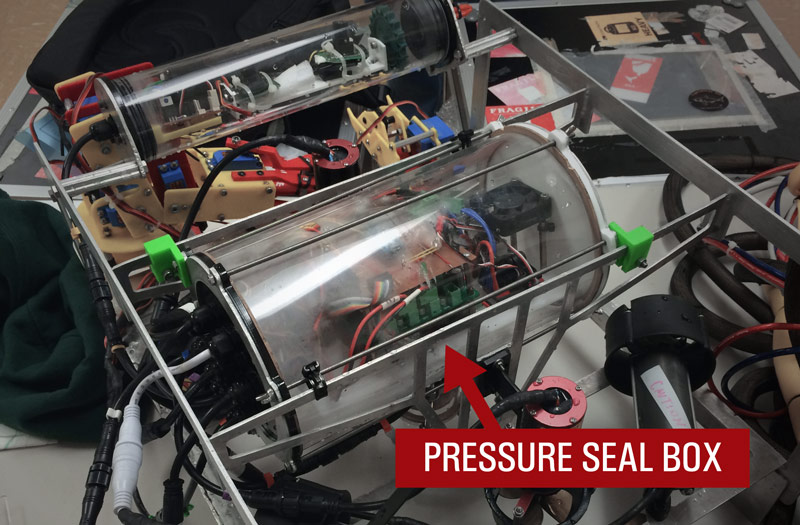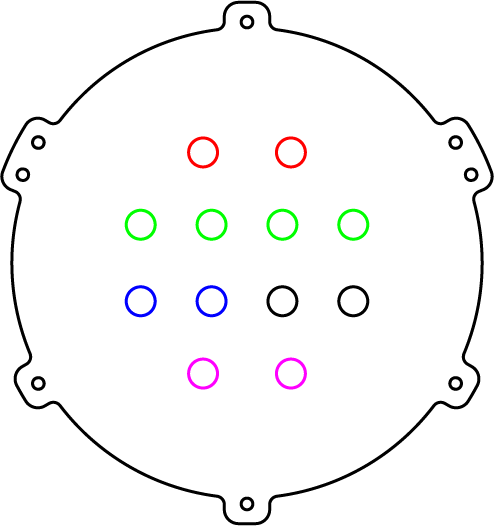Sealing methods for underwater enclosures
June 20th, 2015
Sandbox

As part of our ROV underwater robot design, we’ve gone through several iterations of waterproof enclosures meant for sealing electronics down to 10m deep water. I reckon the method we have right now is bulletproof for a few hundred meters of water as long as there are no cable connectors.
Submersible containers have a ton of uses from underwater DSLR photography to research to ROV vehicles, so a reliable design that can be fabricated easily was something we have tried a long while to come up with. We began with regular lockandlock food containers, but they were made of flimsy and opaque plastic which leaked several times. The next version was with a IP67 rated electronics enclosure, but that had problems with hairline fractures, which let water in. At water depths of 10m where water is pushing with a full atmosphere of force, any tiny crack is magnified and becomes a leaking hole.
This year we’ve gone with a ‘capsule’ based design. Two gaskets and two end caps held together with threaded rods combine to seal a tube. Advantages of this design are:
- Very easy to fabricate and replace parts
- No special tools required
- Easily modified in terms of tube diameter
- The deeper the water, the greater the pressure on the gasket seals
diagram

We’re using this design for a 15cm diameter control tube and a 7cm diameter camera tube, both of which haven’t leaked yet from the gasket seals. Considerations for electrical connectors are more important as we’ve found those have a tendency to leak easily. The holes in the middle of the acrylic caps are for M12 PG7 threaded cable glands. A plasma-cut aluminum ‘washer’ plate is used to spread the force the threaded rods provide.
fabrication
After laser cutting out of 5mm acrylic, the holes were threaded with a M12 tap. The cable glands were teflon taped and then screwed in with the o-ring in place. For added waterproofness, epoxy was coated along the cable gland and end plate contact areas. Multiple end plates were laser cut with different configurations.